Photographs of murals by Rik Freeman are part of To the East: The Rise of Murals East of the River (on view at Phillips@THEARC through February 8, 2024). Curated by Cory Lee Stowers, Executive Director of DC Murals, To the East reveals important context to the purpose and practice of mural-making in Washington, DC, and beyond. The Phillips Collection Fellow, Arianna Adade, met with Rik Freeman to discuss his background.
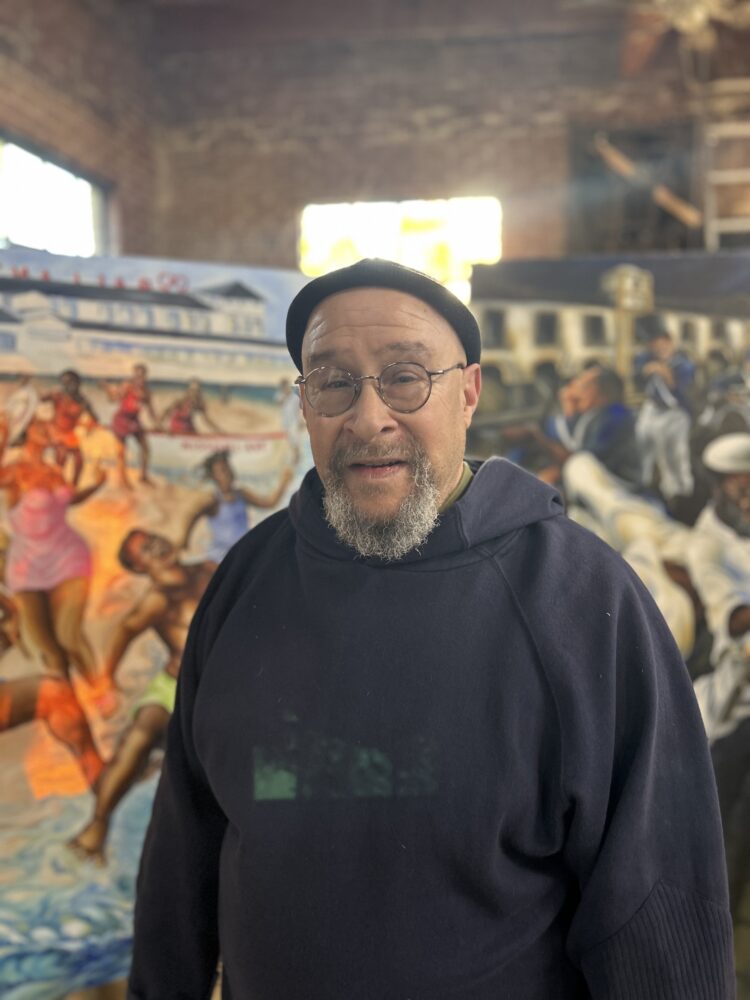
Rik Freeman in his studio
Rik Freeman, a pioneering mural artist, made a name for himself for one of his earliest murals of Marvin Gaye in Washington, DC. Completed in 1993, this mural at the intersection of U Street & 13th Street NW, in the vibrant corridor formerly known as “Black Broadway,” holds special importance as people often forget that Marvin Gaye is a DC native, and also features DC native Duke Ellington. Freeman’s artworks are more than just creative expressions; they serve as educational resources, centered on hundreds of years of Black history.
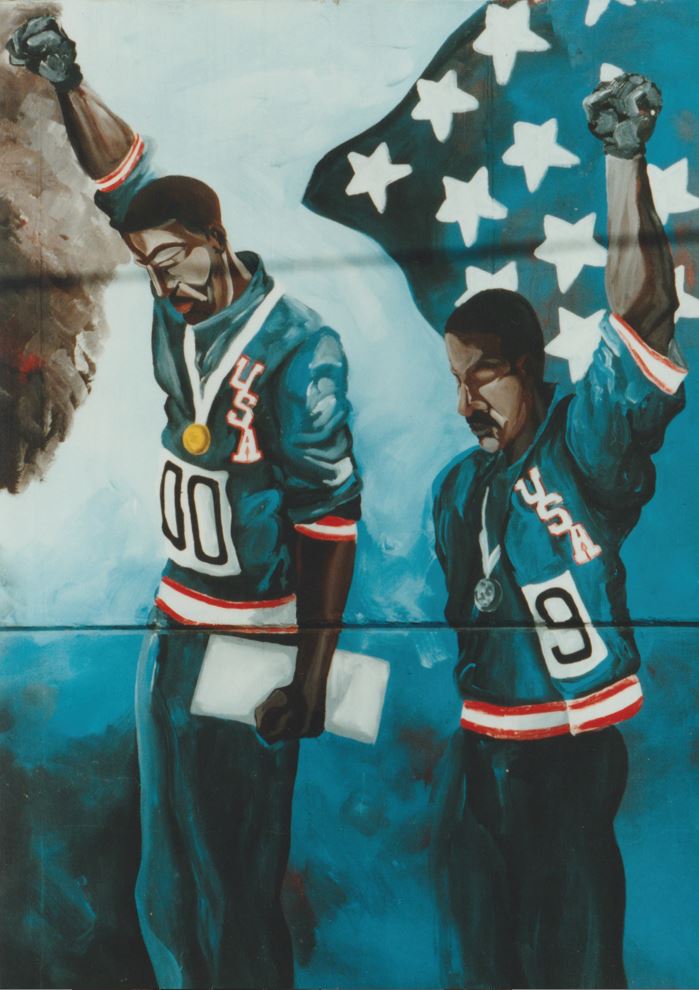
Rik Freeman’s mural in Deanwood, 100 Years in African American History, 1993. Photo: Lou Parnale, 1993

Rik Freeman’s mural on the Douglas Recreation Center, 1990
Rik Freeman was born and raised in Athens, Georgia. Growing up in the South, he went to a segregated school and didn’t attend an integrated school until the fourth grade. He recalls his first attempt with art when he was around 10 or 11 years old, drawing a Hank Aaron portrait on his wall. As a child, he was always sketching but didn’t think of it as a career until high school when he had a Black art teacher. A quiet child who would often get reprimanded for drawing during class, his art teacher allowed him to freely create and experiment with art, invoking his passion for the arts.
Freeman attended Savannah State University where he studied fine art, and it wasn’t until his 20s when he was introduced to mural art. He relocated to DC when he was 29 years old and after battling several obstacles such as losing his father, his job, and going through a break-up, Freeman decided to start taking art seriously. In 1989, he completed his first mural with DC Artworks and has been making a living as an artist ever since.
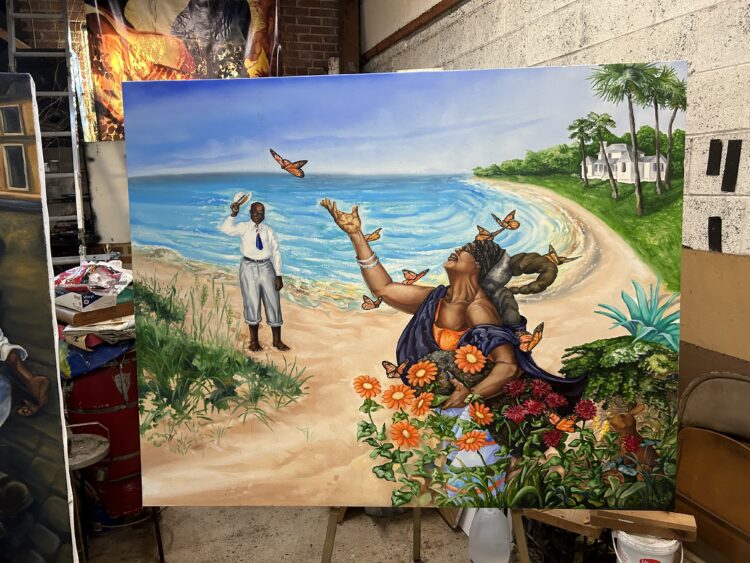
Rik Freeman, Mavynee’s Aria.
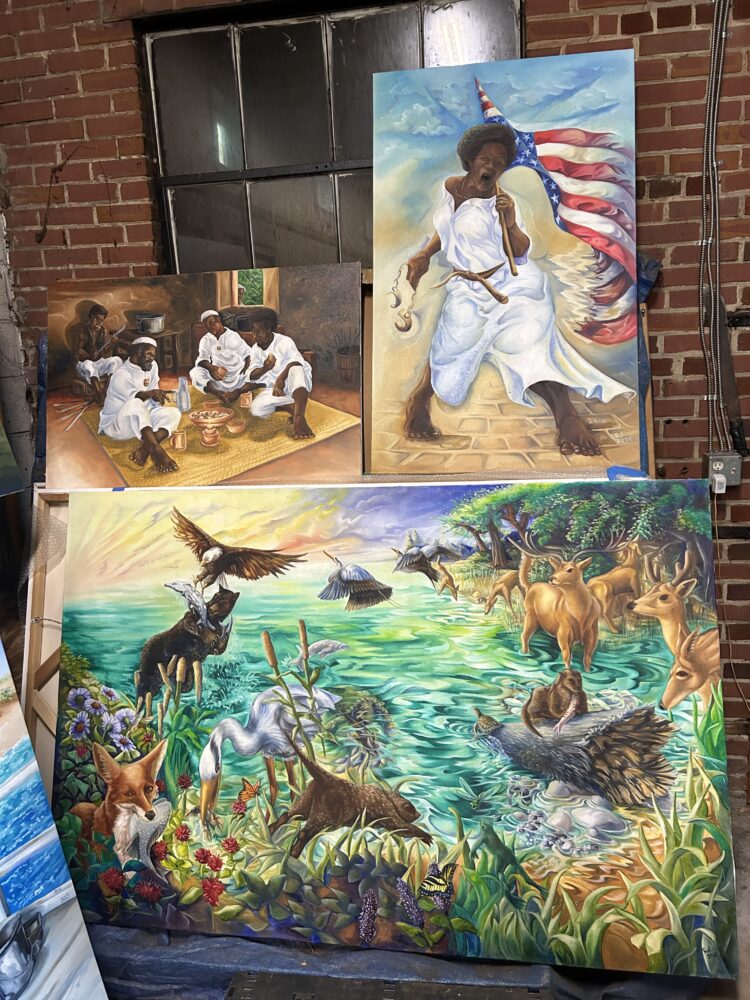
Multiple works by Freeman in his studio
Freeman’s work is deeply rooted in his Southern identity and molded by the rich history of the African diaspora. Freeman’s artistic motivations are diverse; he specifically illustrates blues music in his Blues series, with which he grew up, but also hip-hop and rock. Earth, Wind & Fire, Jimi Hendrix, and The Monkees have all influenced his art. What defines Freeman’s approach lies in his decision to paint murals in working-class communities around the DMV area, emphasizing the importance of everyone, regardless of their socioeconomic status, in molding history.

Rik Freeman’s Studio
Freeman settled permanently in DC after purchasing his home in Deanwood, in Northeast, with his wife. From the outside, his house may seem homely and simple. However, the back tells a different story. Surrounded by beautifully manicured ponds and gardens lies Freeman’s home studio. The gorgeous brick building, covered in lively vines, bolsters large windows throughout, giving an abundance of natural light to the space. The studio harbors dozens of Freeman’s artworks throughout the decades, showing his progression not just as an art, but also as an individual. His beautiful studio often serves as a safe haven for his creative expression and a foundation for his artistic storytelling.
Rather than focusing primarily on iconic Black figures, Freeman’s artistic storytelling has also taken a different path. He purposefully emphasizes the importance of ordinary people in the Black community, highlighting their role in developing and influencing leaders. Through his murals, Freeman hopes to highlight the vital role of everyday individuals in the rich fabric of Black history and culture.
“A book, you can close it. But a painting, you have to see”
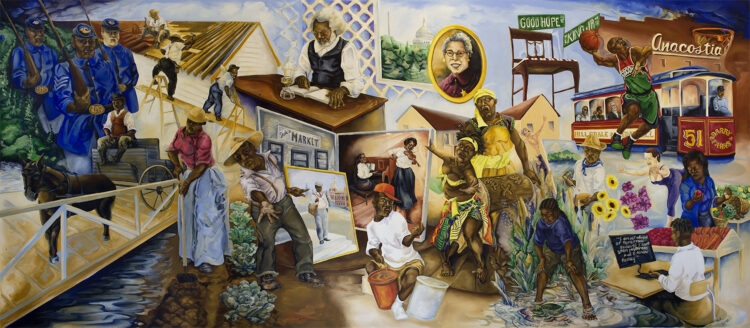
Rik Freeman’s mural, Ode 2 Barry Farms, 2016
